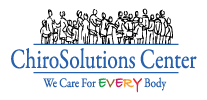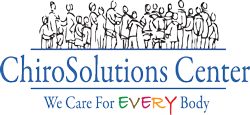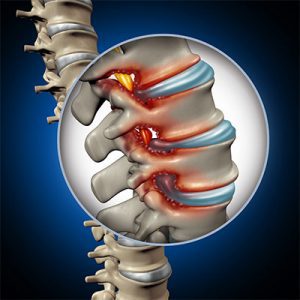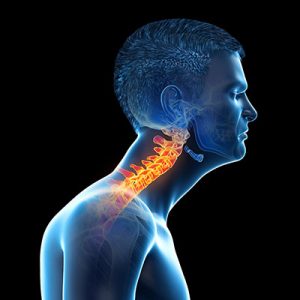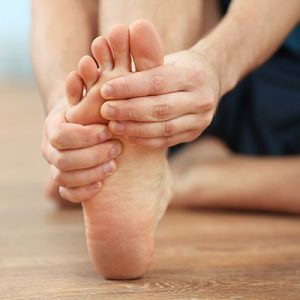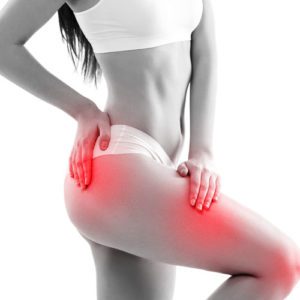“I Think I Injured Myself Exercising”: Here’s How Chiropractic Care Can Be Your Solution
 As a frequent exerciser, it’s easy to get caught up in the mindset of “more is better.” You push yourself through tough workouts day after day, all in the pursuit of your fitness goals. But the truth is, there’s a point where too much exercise can do more harm than good.
As a frequent exerciser, it’s easy to get caught up in the mindset of “more is better.” You push yourself through tough workouts day after day, all in the pursuit of your fitness goals. But the truth is, there’s a point where too much exercise can do more harm than good.
Overtraining can lead to fatigue, injury, and even a decrease in athletic performance. If you suspect you may be overtraining, it’s time to step back and reevaluate.
One tool you may want to consider to help you recover and keep pushing forward is chiropractic care—at ChiroSolutions Center, Dr. Samantha Coleman and her team use Chiropractic BioPhysics® to treat and help heal injuries from over-training and exercising.
What is overtraining, and how does it happen?
Overtraining occurs when you push your body beyond its limits without allowing for proper rest and recovery. This can happen in a number of ways, including:
- Working out too frequently, without giving your body time to heal in between bouts.
- Increasing the intensity of your workouts too quickly, without giving your muscles time to adapt.
- Not getting enough rest or sleep to support your high level of activity.
- Ignoring pain or discomfort in your body, rather than giving yourself time to heal.
If left unchecked, overtraining can lead to a range of symptoms, from chronic fatigue and insomnia to decreased athletic performance and an increased risk of injury.
Why are Overtraining and Exercise Injuries So Common?
Overtraining and exercise injuries have become increasingly commonplace. The reasons are multifaceted. To begin with, there is always prevailing societal pressure to achieve specific goals when it comes to physique. This can often lead to a compulsive desire to train excessively without factoring in adequate recovery time.
High-intensity training programs, while effective, can also contribute to overtraining if not managed properly. These programs often involve strenuous workouts that rapidly increase in difficulty, making it easy for individuals to push past their physical limits.
How do overtraining and exercise injuries most commonly happen?
Most commonly, overtraining and exercise injuries occur due to an imbalance between training and recovery, overuse, or a lack of proper form during exercise. Individuals may ramp up their exercise regime too quickly, or not allow adequate recovery time between workouts.
This can lead to the body not being able to repair and strengthen itself between workouts, leading to decreased performance and possible injuries. Furthermore, overuse of certain muscles or joints, typically seen in repetitive sports like running or cycling, can lead to injuries. Lastly, improper form or technique during workouts can place added strain on the body and result in injury.
How can chiropractic care help with overtraining?
Chiropractic care, and specifically Chiropractic BioPhysics® (CBP), can be an effective tool for managing the symptoms of overtraining. CBP is a technique that uses manual adjustments and other non-invasive methods to improve spinal alignment and overall function. By restoring proper alignment and reducing tension in the muscles and joints, CBP can help your body better manage the stress of exercise.
Additionally, chiropractic care can help you identify imbalances or weaknesses in your body that may be contributing to your overtraining. For example, if you have a misalignment in your hip that’s causing you to compensate during your workouts, chiropractic can help correct that issue and help prevent future injuries.
Mirror-Image™ Adjustments and Overtraining Injuries
Another key component of Chiropractic BioPhysics® that can greatly assist in managing overtraining injuries is the use of Mirror-Image™ Adjustments. These adjustments aim to correct postural distortions in your body that could be exacerbating your injuries or making you more susceptible to future injuries.
When you’re overtraining, you’re often pushing your body to its limits and beyond, which can lead to imbalances in muscle strength and flexibility. These imbalances can cause your body to adapt poor postures that put undue stress on certain muscles and joints. Mirror-Image™ Adjustments help counteract these postural distortions by providing a corrective force in the opposite direction.
For instance, if you have developed a forward head posture from overtraining, a Mirror-Image™ Adjustment would involve exercises and adjustments designed to pull your head back and realign it with your spine. This technique not only helps alleviate pain and discomfort from overtraining injuries but also works to restore your body’s natural balance, reducing the risk of further injuries and improving your overall athletic performance.
Spinal Traction and Exercise Injuries: A Chiropractic BioPhysics® Approach
Another vital component of the Chiropractic BioPhysics® (CBP) treatment strategy is spinal traction. Spinal traction is a type of decompression therapy that aids in the alleviation of pressure on the spine. It can be particularly beneficial for those suffering from injuries related to overtraining or improper exercise.
When overtraining occurs, the increased stress and pressure can lead to misalignments and damage within the spine. This pressure not only causes pain and discomfort but also restricts the body’s natural healing process, exacerbating the injury over time.
Spinal traction in the context of CBP works by gently stretching the spine. This stretching can help to pull spinal discs back into alignment, reducing the pressure on nerves and surrounding tissues. The result is often immediate relief from pain and discomfort, as well as increased flexibility and mobility.
Moreover, by aligning the spine and relieving pressure, spinal traction as part of the CBP protocol can also promote increased blood flow into the affected areas, which can accelerate the healing process. This increased circulation brings necessary nutrients to the damaged tissues, facilitating quicker recovery and preventing further damage from overtraining.
In summary, spinal traction as part of a Chiropractic BioPhysics® treatment protocol can be an effective method in treating exercise injuries, helping not just to manage the symptoms but also to address the underlying issues caused by overtraining. This approach can assist in restoring the body’s natural balance, facilitating optimal performance, and preventing future injuries.
Continuing Chiropractic BioPhysics® Treatment while Exercising
Maintaining a regimen of Chiropractic BioPhysics® (CBP) treatment while continuing with your exercise program carries numerous benefits. Firstly, CBP treatments can help manage and alleviate the physical stress that exercise puts on your body, particularly when you’re pushing your limits. Regular chiropractic care can help prevent injuries associated with overuse and improper form by maintaining proper alignment and balance in your body.
Secondly, CBP treatments can enhance athletic performance. By improving spinal alignment and reducing muscle tension, CBP can lead to increased flexibility, range of motion, and overall function. This not only helps you perform your workouts more efficiently, but it also enables you to achieve your fitness goals more effectively.
Moreover, CBP treatments can promote quicker recovery. By increasing blood flow to damaged tissues and facilitating spinal alignment, chiropractic care can help your body heal faster after strenuous workouts, reducing downtime and helping you get back to your training sooner.
Lastly, continued CBP treatments can also teach you to listen to your body and understand its needs better. Through regular chiropractic visits, you may become more aware of your body’s signals, helping you adjust your workouts to prevent overtraining and promote healthier exercise habits.
Ongoing Chiropractic BioPhysics® treatments while continuing your exercise program can help you stay injury-free, enhance your athletic performance, speed up your recovery, and promote a healthier approach to fitness.
What can you expect during a chiropractic appointment?
At ChiroSolutions Center, our team takes a holistic approach to chiropractic care. We’ll start by conducting a thorough evaluation, including a comprehensive medical history, a physical exam, and potentially diagnostic imaging. From there, we’ll work with you to create a personalized treatment plan that addresses your specific needs.
Depending on your symptoms and the severity of your overtraining, your treatment plan may include a combination of manual adjustments, soft tissue therapy, and corrective exercises. The goal is to help you restore proper alignment and function, so your body can heal itself and continue to perform at its best.
Treat Overtraining and Exercise Injuries with Chiropractic BioPhysics® – ChiroSolutions Center in Virginia Beach, VA
Overtraining can be a real problem for frequent exercisers, but it doesn’t have to hold you back from reaching your goals. By working with a chiropractor who specializes in Chiropractic BioPhysics®, you can support your body’s natural healing process and recover more quickly from the effects of overtraining.
If you’re dealing with symptoms like chronic fatigue, decreased performance, or injury from overtraining, don’t hesitate to reach out to our team at ChiroSolutions Center to learn more about our approach to chiropractic care. With the right support, you can get back on track and keep building the strength and health you deserve.

Similar Posts
Free Initial Consultation
Stop living with pain and discomfort. Contact us to schedule your free initial appointment.
Request an appointment online, or call 757-271-0001
